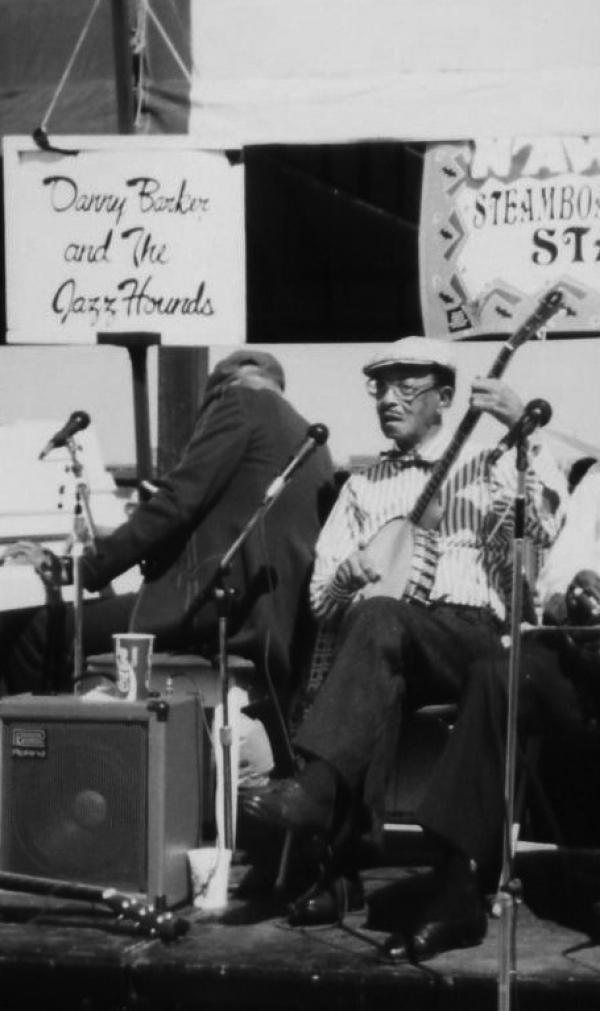Danny Barker

Photo by Infrogmation, Wikimedia Commons
Bio
Upholder of the New Orleans tradition of jazz and blues, this master guitar and banjo player was as well known for his humor and storytelling as for his playing. Many of the younger New Orleans musicians also credit him with providing invaluable information, instruction, and mentoring.
He started his musical training on the clarinet, instructed by the great Barney Bigard, and moved on to the drums, taught by his uncle, Paul Barbarin. These instances of musical guidance and instruction available in New Orleans would inspire him to carry on the tradition of mentoring younger musicians. He later took up the ukulele and the banjo, and began finding work with jazz and blues artists such as the Boozan Kings and Little Brother Montgomery. In 1930 he moved to New York, where he met his wife, vocalist Blue Lu Barker, with whom he frequently recorded. He also wrote many of the songs she performed, such as "Don't You Feel My Leg." By then he had switched from banjo to guitar and found work with Sidney Bechet, James P. Johnson, Albert Nicholas, Fess Williams, and Henry "Red" Allen. He spent the rest of the 1930s working with the big bands of Lucky Millinder, Benny Carter, and Cab Calloway, with whom he stayed for seven years.
In the late 1940s he traveled as a freelance musician, making recordings in Los Angeles and New Orleans. In 1947, Barker appeared on the This Is Jazz radio series, and began playing banjo again. He returned to New York in 1949, working with trombonists Wilbur De Paris and Conrad Janis, and accompanied his wife on gigs. In the early 1960s, he led his own band at Jimmy Ryan's on 52nd Street, then returned to the Crescent City in 1965. Barker continued playing up to the end of his life, even appearing on the Dirty Dozen Brass Band's 1993 recording, Jelly. A number of his compositions have been widely interpreted, such as "Save the Bones for Henry Jones."
Just as important as his performing career were his educational activities. When he returned home to New Orleans in 1965, he worked for 10 years as an assistant curator for the New Orleans Jazz Museum, helping to continue interest in the culture and tradition of the music. He also mentored young musicians through his leadership of the Fairview Baptist Church Brass Band. Barker was a writer as well, co-authoring with Jack Buerkle a study on New Orleans music, Bourbon Street Black, and writing his memoirs, A Life in Jazz.
Selected Discography
Blue Lu Barker, 1938-39, Classics, 1938-39
Blue Lu Barker, 1946-49, Classics, 1946-49
Save the Bones, Orleans, 1988
Blue Lu Barker, Live at New Orleans Jazz Festival, Orleans, 1989
Dirty Dozen Brass Band, Jelly, Columbia, 1993

